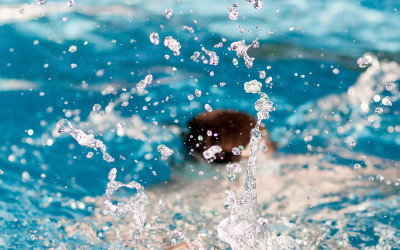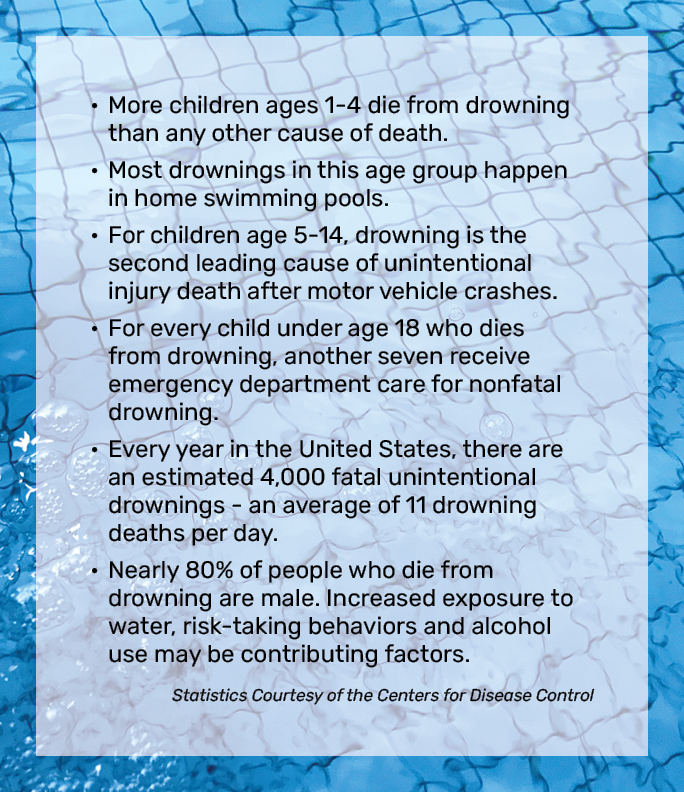Swim Season is Here: Do You Know Your Pool Safety ABCs?
12th May 2023
“It’s all fun and games until somebody gets hurt.”
You’ve probably heard that warning - maybe even said it yourself. But it bears repeating, especially during swim season.
While swimming is a great way to cool off, have fun and get some exercise, a swimming pool does present additional hazards in your yard, particularly if you have children or invite families with children over to use the pool.
Aside from the occasional belly flop, more serious injuries that can occur in and around a swimming pool include friction burns from a pool slide, slips, falls, broken bones, head and neck injuries, and near-drowning or drowning.
No one wants to throw a damper on your pool party. Knowing the proper precautions can eliminate or reduce concerns, so your family and guests have nothing but fun in and around the pool.
Pool Safety ABCs
There are some basic steps you can take to make every swim session a pleasant and accident-free experience and ensure you’re prepared if anything unexpected occurs.
Pool safety is as easy as remembering your ABCs:
Alert
Alert adult supervision is a must when children are in or around the pool. Assign one or more adults to actively scan the pool while children are in the water. Know the signs of drowning.
Be aware of children under the water, on the surface and on the sidelines.
Recognize the hazards presented by some pool toys and equipment. Slides and diving boards present risks, of course, but kids also can be trapped under pool floats.
Keep your cell phone out of reach to eliminate distractions. In the time it takes for you to check your texts or social media, drowning can occur.
Avoid alcohol while supervising pool activity. Alcohol can affect your judgment and slow your reaction time.
Also, make sure all swimmers know and abide by the rules for safe behavior in and around the pool.
Barriers
Children are drawn to water and may try to play in the pool even when no one else is around. Barriers to the pool area are effective at keeping children and pets away from water dangers.
Permanent and temporary fences are a common way to create a barrier around an inground pool. Pool fences are typically four to five feet tall and sturdy enough not to bend or break if a child attempts to climb it. Before installing a fence, check with ordinances in your area. Your community may have different or additional requirements.
For above-ground pools, locking ladders prevent access to keep small children from climbing up.
Pool covers can also be a deterrent to entering a pool unsupervised. However, standard vinyl pool covers can be moved aside and will not prevent a determined effort to enter the pool.
Solid pool covers, also called winter safety pool covers, are an excellent way to prevent pool accidents. These are typically custom-made for an inground pool and are sturdy enough to support the weight of a small child or animal who might walk over it.
A pool safety alarm that goes off if an object over a certain weight enters the water is another good way to prevent tragic pool accidents.
Classes
All children benefit from swim lessons. Even babies can enjoy a safe dip in the pool through parent-child classes. Check for children’s swimming lessons offered in your area through the YMCA, American Red Cross and community education programs.
As a parent and/or pool owner, it’s also a good idea to learn the basics of first aid and CPR, so you’re prepared in an emergency.
In addition, high school students and adults can obtain lifeguard certification through the Red Cross and other organizations.
Defense
In sports, you’ve heard “the best defense is a good offense.” This is true with swimming pool safety, too.
Take pool safety seriously by being aware of swimmer’s actions in a crowded pool, preventing accidental access to a pool and improving swimming skills.
This helps reduce your stress and paves the way for everyone to have fun in the pool.
Enjoy!
You may also like:
Safety First: Safety in the Water is a Pool Owner's First Priority
6 Steps to Keep Pets and Wildlife Safe Around Your Pool

